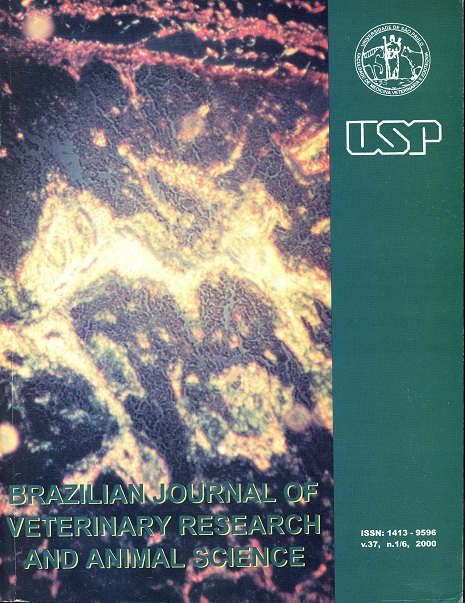Physiological variations of reproduction parameters of Holstein-Friesian cows imported from Hungary to Northeastern Brazil
DOI:
https://doi.org/10.1590/S1413-95962000000300008Keywords:
Acclimatization, Superovulation, Heatstress, Holstein-Friesian breed, ReproductionAbstract
Number of days between the calving and first estrus, ovarian volumes and superovulation results on performance of Holstein Friesian donor cows (n = 70) from a MOET center unit were analyzed in a two-years experiment for the environmental effects. In the experimental year 112.1 ± 30.5 days passed from calving to first estrus, which was significantly longer than in the control experiment (48 ± 12.0, p < 0.05). Results of ovarian volumes were also consistent with the theory that sexual activity of the donor cows is depressed by the acclimatization stress. The cows were superovulated. Responses were modeled with last square analysis of variance and differences were analyzed by ;c;² probe and t-test. Acclimatization period affects on the efficiency of superovulation treatment and embryo production. Number of ovulation (6.7 ± 3.5), good quality embryos (1.2 ± 1.5), collection efficiency (57.0%), and embryo recovery rate (46.3%) were significantly different from the control experiments. Continuously elevated environmental temperature and permanent lighting hours in the new environment during the one and a half year long adaptation period does appear to adversely affect reproductive responses of imported Holstein Friesian donor herd intensively managed in a MOET (Multiply Ovulation and Embryo Transfer) center.Downloads
Download data is not yet available.
Downloads
Published
2000-01-01
Issue
Section
VETERINARY MEDICINE
License
The journal content is authorized under the Creative Commons BY-NC-SA license (summary of the license: https://
How to Cite
1.
Bényei B, Barros CWC. Physiological variations of reproduction parameters of Holstein-Friesian cows imported from Hungary to Northeastern Brazil. Braz. J. Vet. Res. Anim. Sci. [Internet]. 2000 Jan. 1 [cited 2024 Apr. 24];37(3):216-20. Available from: https://www.revistas.usp.br/bjvras/article/view/5818





